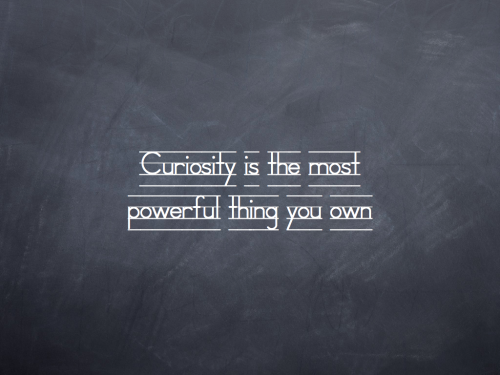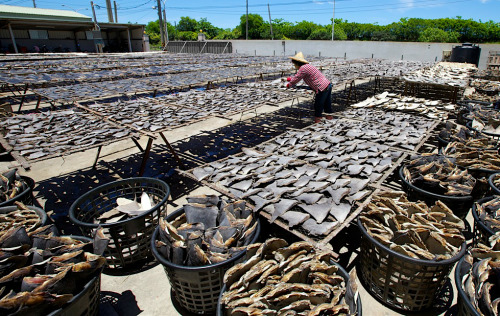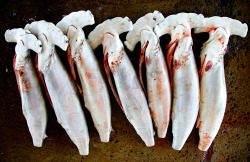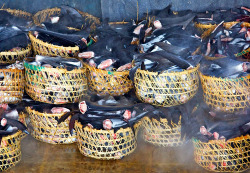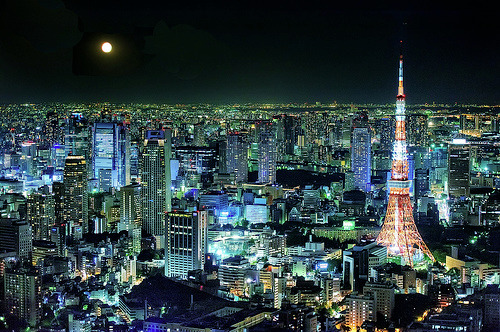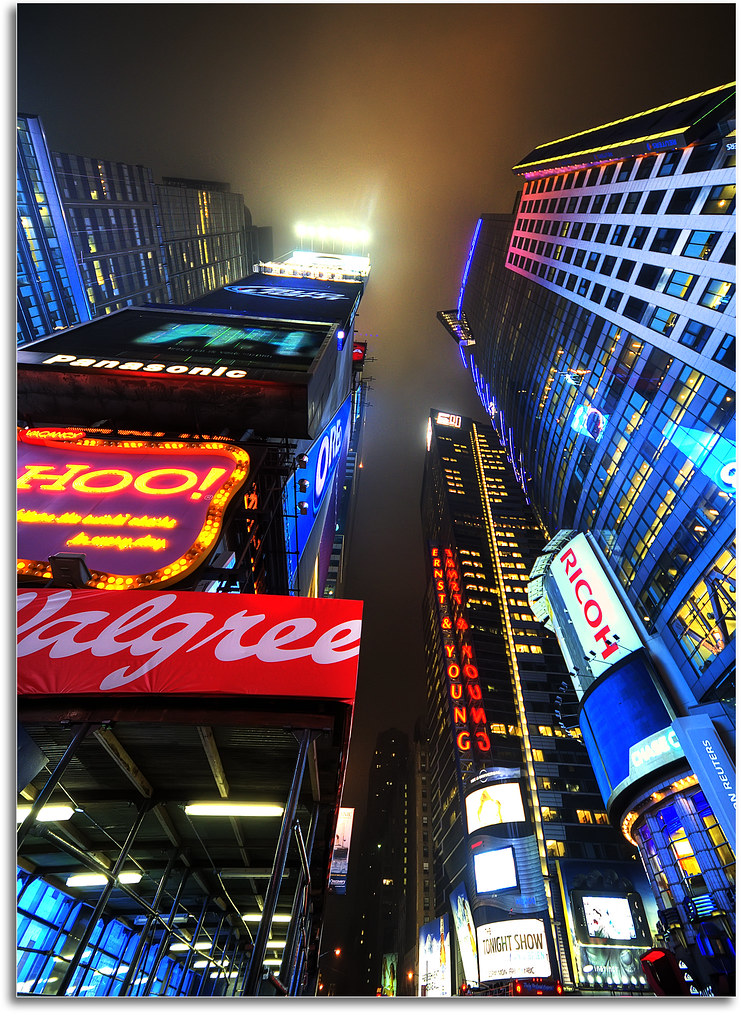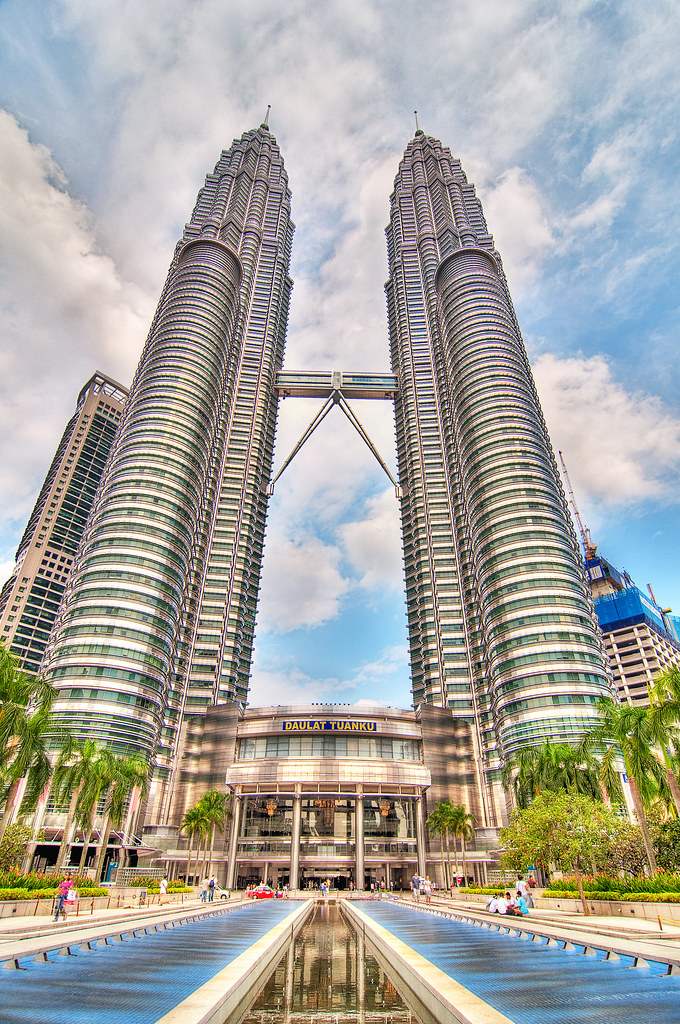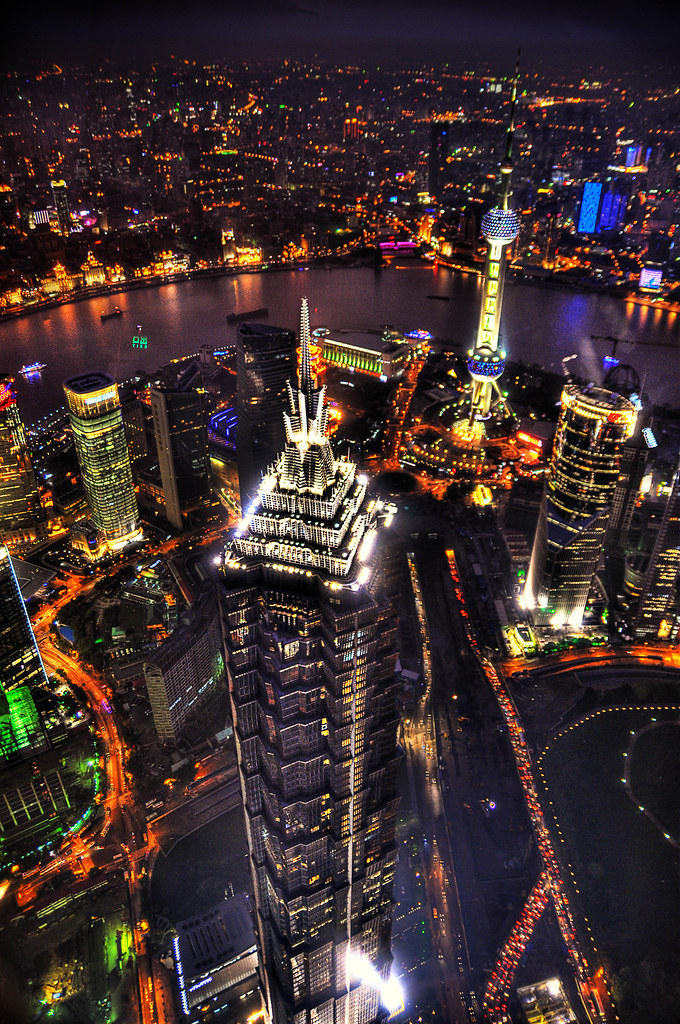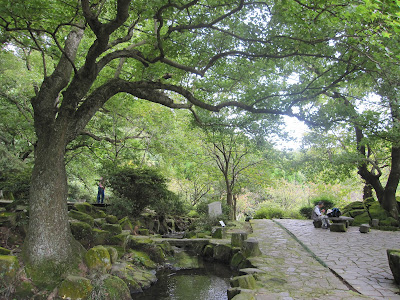Sunday, October 30, 2011
Love for a Lifetime
"Haven't you read," he replied, "that at the beginning the Creator 'made them male and female,' and said, 'For this reason a man will leave his father and mother and be united to his wife, and the two will become one flesh'? So they are no longer two, but one flesh. Therefore what God has joined together, let no one separate" (Matthew 19:4-6 NIV).
Jesus' teaching on a Marriage that last is found in the verses above. Rather than focus on the negative and what is destructive and selfish which will eventually let to a breakup, focus our determined efforts to deepen our marriage relationship in all of these four areas — socially, physically, emotionally, and spiritually.
Here are some questions that could be helpful for us to ask ourselves at the end of each week:
Please enjoy this YouTube video made from Mark Schultz's beautiful song called, "Walking Her Home"
Jesus' teaching on a Marriage that last is found in the verses above. Rather than focus on the negative and what is destructive and selfish which will eventually let to a breakup, focus our determined efforts to deepen our marriage relationship in all of these four areas — socially, physically, emotionally, and spiritually.
Here are some questions that could be helpful for us to ask ourselves at the end of each week:
- Social - What have I done to deepen my relationship with my spouse by how I talked and demonstrated my love for him/her in front of my friends and family?
- Physical - How have I sought to bring pleasure and fulfillment to my marriage partner in our physical relationship?
- Emotional - When have I made myself emotionally available and been emotionally supportive of my wife/husband this past week?
- Spiritual - What are we doing as a couple to deepen our spiritual walk with God together?
Please enjoy this YouTube video made from Mark Schultz's beautiful song called, "Walking Her Home"
Faith
Faith in antagonism to common sense is fanaticism, and common sense in antagonism to faith is rationalism. The life of faith brings the two into a right relation. Common sense is not faith, and faith is not common sense; they stand in the relation of the natural and the spiritual; of impulse and inspiration. Nothing Jesus Christ ever said is common sense, it is revelation sense, and it reaches the shores where common sense fails. Faith must be tried before the reality of faith is actual. "We know that all things work together for good," then no matter what happens, the alchemy of God's providence transfigures the ideal faith into actual reality. Faith always works on the personal line, the whole purpose of God being to see that the ideal faith is made real in His children.
For every detail of the common-sense life, there is a revelation fact of God whereby we can prove in practical experience what we believe God to be. Faith is a tremendously active principle which always puts Jesus Christ first - Lord, Thou hast said so and so (e.g., Matthew 6:33), it looks mad, but I am going to venture on Thy word. To turn head faith into a personal possession is a fight always, not sometimes. God brings us into circumstances in order to educate our faith, because the nature of faith is to make its object real. Until we know Jesus, God is a mere abstraction, we can not have faith in Him; but immediately we hear Jesus say - "He that hath seen Me hath seen the Father," we have something that is real, and faith is boundless. Faith is the whole man rightly related to God by the power of the Spirit of Jesus Christ.
Creativity
We live in a hectic time. Ours is an instant gratification society. We want it now. Yet, as we reflect on the best things in our lives, we often find the truly important things (like relationships, love and peace) took time to develop.
The ‘always on’ nature of the tools we use in business can all too easily trap us into believing that we can function as machines too. But we’re not machines, we’re human beings.
Is there a way to achieve peak performance and happiness in life too? Of course. Here are five factors which, when practiced consistently in your life, will help you tap into the giant creativity reservoir you have within.
Is there a way to achieve peak performance and happiness in life too? Of course. Here are five factors which, when practiced consistently in your life, will help you tap into the giant creativity reservoir you have within.
1. Find your peak mental timeYou may hear some people say “I’m a morning person” while others say they don’t really get started until 11pm. There is no right or wrong in these situations, but it is vital to know who YOU are and go with that rather than fighting it. One great way to discover your peak time is to keep a log of how you feel. Keep a log for a week, noting when you felt the sharpest. Then arrange your work around these peak hours, planning the most important tasks for this time. Many have found that once they harmonize with who they really are, they get much more done in less time.
2. Make a ‘creativity appointment’ with yourselfPlan 30 minutes every day DURING this peak time for a “creativity appointment”. Make this time as undisturbed as possible. Use this time to connect deeply with your mission in life.
3. Get ready to solve a problemDuring this time, think deeply for the first 10 minutes about the biggest problem you face. Allow yourself to play ‘what if’ about the challenge you face. If you had every resource a person could have, would it still BE a problem? What if you tackled it and did nothing else? Would that solve it? What if you neglected it completely for two weeks? Would that make it worse, or make it go away?
4. Let your subconscious workAfter these 10 minutes, and for the rest of the time, let your mind wander anywhere it wants to go. If possible, look outside and look at the sky. Even better, go outside and hear the sounds of nature. You want to think expansively now, to consider all possibilities.
5. Prepare for the answerDuring this quiet time, keep a pad and pen handy and write down any new and creative thoughts that come to you. You may find that during this time new, and very exciting, thoughts and possibilities rush into your mind. Write each one down, no matter how silly they may seem.
Be consistent. The more often you keep your creativity appointments, the more you will find that you have the “aha!” moments during your day, when solutions to problems just pop into your mind.
Expand the appointments to include a half-day a month and you will unleash even more creativity. Soon, you will hunger for these times because you will find that it is while doing nothing at all that something very good gets done.
____________
Author: Eva Gregory
Life is Short, Do Something Significant
This great little film gives a glimpse into what surely a lot of people feel, at least sometimes, working in the big cities such as Tokyo. Life is short, you'd better do something you love. I love the ultra wide screen.
Life is short. We seem to think that we’ll live forever. We spend time and money as though we’ll always be here. We buy shiny things as though they matter and are worth the debt and stress of attachment. We put off the so-called “trip of a lifetime” for another year, because we all assume we have another year. We don’t tell the ones we love how much we love them often enough because we assume there’s always tomorrow. And we fear. Oh, do we fear. We stick it out in miserable jobs and situations because we’re afraid of the risk of stepping out. We don’t reach high enough or far enough because we’re worried we’ll fail, forgetting – or never realizing – that it’s better to fail spectacularly while reaching for the stars than it is to succeed at something we never really wanted in the first place.
People Are Awesome 2011
" I praise you because I am fearfully and wonderfully made; your works are wonderful, I know that full well." - Psalm 139:14 "
Many, O LORD my God, are the wonders you have done. The things you planned for us no one can recount to you; were I to speak and tell of them, they would be too many to declare." - Psalm 40:5
The context of this verse is the incredible nature of our physical bodies. The human body is the most complex and unique organism in the world, and that complexity and uniqueness speaks volumes about the mind of its Creator. Every aspect of the body, down to the tiniest microscopic cell, reveals that it is fearfully and wonderfully made.
Engineers understand how to design strong yet light beams by putting the strong material toward the outside edges of a cross-section and filling the inside with lighter, weaker material. This is done because the greatest amounts of stress occur on the surfaces of a structure when handling common bending or stresses. A cross section of a human bone reveals that the strong material is on the outside and the inside is used as a factory for blood cells of various kinds. When you examine a sophisticated camera with its ability to let in more or less light as needed and its ability to focus automatically over a vast range of field, you find repeated imitations of the operation of the human eye. And yet, having two eyeballs, we also have depth perception which gives us the ability to judge how far away an object is.
The human brain is also an amazing organ, fearfully and wonderfully made. It has the ability to learn, reason, and control so many automatic functions of the body such as heart rate, blood pressure, and breathing, and to maintain balance to walk, run, stand, and sit, all while concentrating on something else. Computers can outdo the human brain in raw calculating power but are primitive when it comes to performing most reasoning tasks. The brain also has an amazing ability to adapt. In an experiment, when people put on glasses that made the world seem upside down, their brains quickly reinterpreted the information they were being given to perceive the world as “right-side-up.” When others were blindfolded for long periods of time, the “vision center” of the brain soon began to be used for other functions. When people move to a house near a railroad, soon the sound of the trains is filtered out by their brains, and they lose conscious thought of the noise.
When it comes to miniaturization, the human body is also a marvel fearfully and wonderfully made. For instance, information needed for the replication of an entire human body, with every detail covered, is stored in the double-helix DNA strand found in the nucleus of each of the billions of cells in the human body. And the system of information and control represented by our nervous system is amazingly compact in comparison to man’s clumsy inventions of wires and optical cables. Each cell, once called a “simple” cell, is a tiny factory not yet fully understood by man. As microscopes become more and more powerful, the incredible vistas of the human cell begin to come into focus.
Consider the single fertilized cell of a newly conceived human life. From that one cell within the womb develop all the different kinds of tissues, organs, and systems, all working together at just the right time in an amazingly coordinated process. An example is the hole in the septum between the two ventricles in the heart of the newborn infant. This hole closes up at exactly the right time during the birth process to allow for the oxygenation of the blood from the lungs, which does not occur while the baby is in the womb and is receiving oxygen through the umbilical cord.
Further, the body’s immune system is able to fight off so many enemies and restore itself from the smallest repair (even repairing bad portions of DNA) to the largest (mending bones and recovering from major accidents). Yes, there are diseases that will eventually overcome the body as we age, but we have no idea how many times through a lifetime that our immune systems have saved us from certain death.
Saturday, October 29, 2011
11 September 2011 marked the six-month anniversary of Japan's massive earthquake and tsunami.
Some 20,000 people are dead or missing. More than 800,000 homes were completely or partially destroyed. The disaster crippled businesses, roads and infrastructure. The Japanese Red Cross Society estimates that 400,000 people were displaced.
Half a year later, there are physical signs of progress.
Much of the debris has been cleared away or at least organized into big piles. In the port city of Kesennuma, many of the boats carried inland by the tsunami have been removed. Most evacuees have moved out of high school gyms and into temporary shelters or apartments.
The Kyodo News agency distributed an amazing group of combination photographs showing three scenes. The first scene is right after the earthquake and tsunami hit, then three months later, and finally how the scene looks now.
Thursday, October 27, 2011
Wednesday, October 26, 2011
New Zealand South Island Timelapse
WHY SHOULD I GO TO THE OTHER SIDE OF THE WORLD?
In one word: adventure. The wild and wonderful South Island of New Zealand offers everything from remote trekking to whale-watching. Within an area the same size as England and Wales, you can float over tranquil meadows in a hot-air balloon, get up close to a glacier, enjoy the fruits of the southernmost wine-making region in the world, and even get a glimpse into Antarctica.
I spent 6 years of my life there as a student and it is well worth the experience.
I spent 6 years of my life there as a student and it is well worth the experience.
The Road to Nowhere: M25 celebrates 25th anniversary
When I was in London as a student, I had used this ring motorway before. Of course in those days, there weren't so much traffic and it serves it purpose well. However, with car population increases, the M25 is getting more and more congested.
Watch the BBC video here.
As the M25 celebrates its 25th birthday, BBC's Sally Boazman takes a road trip to see how the motorway has changed our economy, environment and living habits.
The 117-mile (188km) orbital road took more than 11 years to build. It cost £1bn, and used more than two million tonnes of concrete and 3.5 million tonnes of asphalt.
The final section was opened by Prime Minister Margaret Thatcher in October 1986 to a huge fanfare.
Sally Boazman charts the M25's history, follows the team that keeps it moving, and meets a couple who even got married on it.
A Simplified History of China
Today is Deepavali and I wish all Hindus and Indians a very happy Deepavali. It is a public holiday in this part of the world and I have been trying to do some useful reading. One of the top on my list articles to read is the history of China. With such a long and complicated history, I usually do not have the time and patience to read those long articles on this subject.
Today I came across this website which gives a brief history of China, I find it useful and hope it would benefit you as well. The first 2 paras of the article is given below.
Today I came across this website which gives a brief history of China, I find it useful and hope it would benefit you as well. The first 2 paras of the article is given below.
" Homo erectus fossils ("Peking Man", nowcalled "Beijing Man" in China) have been found in the cave-ridden hills of Zhoukoudian (50 kilometers southwest of Beijing) which are an estimated 680,000 to 780,000 years old. Agricultural civilization began in China as early as 8,000 BC with the cultivation of millet & rice around the Yellow & Yangtze Rivers, respectively. Settlements along the Yangtze began to use silk and produce art having dragon motifs around 3,500 BC. Finely carved jade (a symbol of wealth and power in China comparable to gold in the West) first appeared around the Yellow River around 3,500 BC.
The first known Chinese dynasty was that of the Shang, which began in northeastern Hunan and later extended eastward along the Yangtze to the sea. Shang warriors used horse-drawn chariots. Various city-states served as capital during the 500 or so years of the dynasty. Religion was based on reverence for ancestors, heavenly bodies and a supreme god who dominated the forces of nature. Royalty have been found buried with their valuables, including servants who were buried alive. The invention of Chinese writing is associated with Shang, which would explain why the Shang is the first dynasty for which there is a written record."
Invention of Chinese Writing
Symbols were carved on oracle bones and tortoise shells
Iceman Autopsy - Video: Autopsy Time Lapse - Pictures, More From National Geographic Magazine
Iceman Autopsy - Video: Autopsy Time Lapse - Pictures, More From National Geographic Magazine
When it comes to the Iceman, there has never been a shortage of questions, or theories to answer them. During the 16 years that scientists have poked, prodded, incised, and x-rayed his body, they have dressed him up in speculations that have not worn nearly as well as his rustic garments. At one time or another, he has been mistakenly described as a lost shepherd, a shaman, a victim of ritual sacrifice, and even a vegan. But all these theories fade in the face of the most startling new fact scientists have learned about the Iceman. Although we still don't know exactly what happened up there on that alpine ridge, we now know that he was murdered, and died very quickly, in the rocky hollow where his body was found. Read more ...
Iceman Mystery
Scientists have poked, prodded, and x-rayed the 5,000-year-old mummy found in the Alps. They now think he was murdered.
When it comes to the Iceman, there has never been a shortage of questions, or theories to answer them. During the 16 years that scientists have poked, prodded, incised, and x-rayed his body, they have dressed him up in speculations that have not worn nearly as well as his rustic garments. At one time or another, he has been mistakenly described as a lost shepherd, a shaman, a victim of ritual sacrifice, and even a vegan. But all these theories fade in the face of the most startling new fact scientists have learned about the Iceman. Although we still don't know exactly what happened up there on that alpine ridge, we now know that he was murdered, and died very quickly, in the rocky hollow where his body was found. Read more ...
73 million Sharks Killed Annually
Many in this part of the world enjoy shark fins soup. It is a delicacy especially in China, HongKong and Taiwan. When I was young and ignorant, I used to like it very much too. It is usually the 2nd dish of the traditional ten-course Chinese dinner. However, over the last decade or so, I have avoided ordering this dish and discourage others from consuming it because of the implications of overkilling the sharks and the cruelty of this trade.
The world's booming shark fin trade is killing up to 73 million sharks per year—about three times more than the official catch number reported to the United Nations, a new study concludes.
"The shark fin trade is notoriously secretive. But we were able to tap into fin auction records and convert from fin sizes and weights to whole shark equivalents to get a good handle on the actual numbers," said study leader Shelley Clarke, an American fisheries scientist who works in Hong Kong and Japan.
Fins are the most valuable parts of a shark and are used in shark fin soup, a delicacy served at Chinese weddings and business dinners in Southeast Asia and the Pacific Rim. Sharks are often still alive when their fins are sliced off, and their bodies are thrown back into the sea.
Scientists worry that the demand for shark fins could soon outpace the abilities of sharks to reproduce. This is probably already happening for one species, the blue shark, the researchers say. Their findings suggest that the current trade in blue sharks is close to or possibly even exceeding the species' maximum yield levels.
Data for other shark species is less complete, but the researchers think a similar thing might be happening to them as well.
"It is quite likely that sustainable catch levels have already been exceeded in some cases," Clarke said.
The overfishing of sharks could have serious effects for the entire marine food chain in some ecosystems.
Another recent study found that removing sharks from a reef environment in the Caribbean had a trickling effect on other species. Without sharks, carnivorous fish that the sharks usually fed on thrived. The carnivorous fish, in turn, preyed on parrotfish that kept the corals clean.
In time, the reefs changed from one dominated by coral to one overrun by algae.
The overfishing of sharks could have serious effects for the entire marine food chain in some ecosystems.
Another recent study found that removing sharks from a reef environment in the Caribbean had a trickling effect on other species. Without sharks, carnivorous fish that the sharks usually fed on thrived. The carnivorous fish, in turn, preyed on parrotfish that kept the corals clean.
In time, the reefs changed from one dominated by coral to one overrun by algae.
Tuesday, October 25, 2011
World Cities
Tokyo
Half of humanity now lives in cities, and within two decades, nearly 60 per cent of the world’s people will be urban dwellers. Urban growth is most rapid in the developing world, where cities gain an average of 5 million residents every month. As cities grow in size and population, harmony among the spatial, social and environmental aspects of a city and between their inhabitants becomes of paramount importance. This harmony hinges on two key pillars: equity and sustainability.
Alantis Dubai
Paris
Paris
Paris
London
Bernn
New York
Downtown Manhattan
Brooklyn Bridge, Lower Manhattan
Building with the rabbit ear cranes and all lights is the new World Trade Center finally breaking into Manhattan's skyline.
Arc de Triomphe, Paris
Times Square, New York
Karachi
Tokyo
HongKong
Marina Bay Sands, Singapore
Petronas Towers, Kuala Lumpur
Fullerton Hotel, Singapore
Singapore
San Francisco
Jinmao Tower, Shanghai
HongKong
5 Tips to Simplifying Your Life
Below are some sure-fire ways to simplify your life and enjoy your family more:
1) Question Everything
Will you need to jump through hoops to make an activity work?
2) Designate a Clutter-Free Space
Do you have piles everywhere? Can you find something in 30 seconds or less?
3) Don’t Force Your Workouts
I recommend doing a focused, intense 15 minute workout.
4) Practice the Art of Relaxing
Designate 15 minutes a day to drinking a cup of tea (peppermint is a winner!)
5) Find a Hands-On Family Project
How to Relief Stress in Your Daily Life
More and more people are experiencing high levels of stress in their lives. According to sources, work is the biggest stress factor for adults. Work provides a significant source of stress for over 60 percent of people in the U.S.
Evidence also reveals that stress contributes to heart disease. Stress hormones will actually cause the body to increase blood clotting; therefore, stress can bring on a heart attack. Not only can being overstressed hurt you physically, it's also dangerous to your mental health. There is reason to believe that stress can trigger episodes of many disorders, including panic disorder, bipolar disorder and schizophrenia.
Now that you know stress can have dangerous consequences, are you ready to take a step back and relax? Take a deep breath and go for advice on stress relief.
Read More ...
Monday, October 24, 2011
Vacation in Taipei - Yang Ming Shan
Yangmingshan National Park is located at the northern edge of the Taipei basin, Yangmingshan National Park extends east to Huangtsui and Mt. Wuchih, west to Mt. Hsiangtien and Mt. Mientien, north to Mt. Chutzu and Tutikung Ridge, and south to Mt. Shamao.
The park occupies an area of approximately 11,455 hectares and spans the administrative districts of Shihlin and Peitou in Taipei City and Tanshui, Sanchih, Shihmen, Chinshan and Wanli in Taipei County. The elevation of the park ranges from 200 meters to 1,120 meters.
Yangmingshan was called Caoshan (Grass Mountain) during Japanese occupation of Taiwan, because it was covered with grass and seldom visited. After World War II, the KMT government renamed the mountain Yangmingshan and built a park here. Yangmingshan National Park is the only park in Taiwan that has volcanic geography and hot springs. It is next to Shamao Mountain and Qixing Mountain with Datun Mountain on the right and Guanyin Mountain in front. The magnificent mountainous scenery and comfortable weather have made Yangmingshan National Park a perfect summer resort. Total area of the park is 125 hectares, designed in traditional Chinese style. The natural beauty of the part has won it the reputation as urban forest and the Taipei garden.
Since I like nature walks, this park is one of the top on my list of visit places in Taipei. Since we were on free and easy, we decided to take the public transport. It is easy, you will need to catch the Bus 260. This bus will bring you directly to Yang Ming Shan. I took the bus (公车) from the main Taipei Railway Station. If in doubt just ask, Taiwanese are very friendly people.
Other ways of getting there:
1. Take the THSR or train to Taipei Station, continue by Royal Bus (bound for Jinshan) to the Yangmingshan National Park Administration. Taiwan High Speed Rail
2. Take the THSR or train to Taipei Station, continue by Bus Red-5 to Yangmingshan stop. Then take Bus No. 108 to Tourist Center stop.
3. Take the THSR or train to Taipei Station, continue by Bus No. 26 to Yangmingshan stop. Then take Bus No. 108 to Tourist Center stop.
Enjoy the pictures below.
The park occupies an area of approximately 11,455 hectares and spans the administrative districts of Shihlin and Peitou in Taipei City and Tanshui, Sanchih, Shihmen, Chinshan and Wanli in Taipei County. The elevation of the park ranges from 200 meters to 1,120 meters.
Yangmingshan was called Caoshan (Grass Mountain) during Japanese occupation of Taiwan, because it was covered with grass and seldom visited. After World War II, the KMT government renamed the mountain Yangmingshan and built a park here. Yangmingshan National Park is the only park in Taiwan that has volcanic geography and hot springs. It is next to Shamao Mountain and Qixing Mountain with Datun Mountain on the right and Guanyin Mountain in front. The magnificent mountainous scenery and comfortable weather have made Yangmingshan National Park a perfect summer resort. Total area of the park is 125 hectares, designed in traditional Chinese style. The natural beauty of the part has won it the reputation as urban forest and the Taipei garden.
Since I like nature walks, this park is one of the top on my list of visit places in Taipei. Since we were on free and easy, we decided to take the public transport. It is easy, you will need to catch the Bus 260. This bus will bring you directly to Yang Ming Shan. I took the bus (公车) from the main Taipei Railway Station. If in doubt just ask, Taiwanese are very friendly people.
Other ways of getting there:
1. Take the THSR or train to Taipei Station, continue by Royal Bus (bound for Jinshan) to the Yangmingshan National Park Administration. Taiwan High Speed Rail
2. Take the THSR or train to Taipei Station, continue by Bus Red-5 to Yangmingshan stop. Then take Bus No. 108 to Tourist Center stop.
3. Take the THSR or train to Taipei Station, continue by Bus No. 26 to Yangmingshan stop. Then take Bus No. 108 to Tourist Center stop.
Enjoy the pictures below.
Subscribe to:
Posts (Atom)
Blog Archive
-
▼
2011
(80)
-
▼
October
(21)
- Isaiah 46:4
- Love for a Lifetime
- Faith
- Creativity
- Life is Short, Do Something Significant
- People Are Awesome 2011
- 11 September 2011 marked the six-month annive...
- Where is this City?
- Curiosity
- New Zealand South Island Timelapse
- The Road to Nowhere: M25 celebrates 25th anniversary
- A Simplified History of China
- Iceman Autopsy - Video: Autopsy Time Lapse - Pictu...
- 73 million Sharks Killed Annually
- World Cities
- 5 Tips to Simplifying Your Life
- How to Relief Stress in Your Daily Life
- Vacation in Taipei - Yang Ming Shan
- Vacation in Taipei - Yehliu Geopark
- Vacation in Taipei - Chiang Kai-shek Memorial Hall
- Vacation in Taipei - Day 1
-
▼
October
(21)
Popular Posts
-
Received this from one of my Indian friends in Chennai. This is their vision for Indian cities. As we work with our Indian counterparts, I ...
-
Chinese New Year fireworks will mark the beginning of the Chinese New Year festival which normally last for 15 days. The sound of firecrac...
-
I have been trying to learn Mandarin on several occasions years ago without much success. It was due mainly to my lack of perseverance ...
-
Qingming Shanghe Tu is a Panoramic Chinese scroll painting by Zhang Zeduan. Literally, qingming 清明 means “clear-bright,” and shanghe tu ...
-
I have been reading this book of Aung San Suu Kyi who has become an international symbol of peaceful resistance in the face of oppression....
-
Good hygiene is important in taking care of yourself physically as well as emotionally. People often have infections because they don’t take...
-
I am thinking of starting to train for a marathon after having been inspired by this article. Here, Barbara Hannah Grufferman sa...






